We’ve been hearing a lot of buzz around Digital Experience Platforms, especially off the back of Umbraco Codegarden, in fact, we spoke about it extensively! But the question is, are we doing this already or do we have to form a brand new strategy in order to achieve this? For Carbon Six Digital it’s the former and it’s probably the same for you too!
What is a DXP?
According to Gartner a DXP is:
“A digital experience platform (DXP) is an integrated set of core technologies that support the composition, management, delivery and optimization of contextualized digital experiences”
- Gartner Glossary
So in short, a collection of technologies that provide an integrated digital experience.
But there are two types of DXP; composable and monolithic.
Early entrants into this category were typically the big, enterprise-grade platforms where you buy wholesale into a single application platform, so-called Monolithic DXPs, that provide personalisation, analytics, eCommerce, CDP, and search.
Key players in the monolithic DXP space include:
- Adobe Experience Cloud
- Oracle Advertising and Customer Experience
- Salesforce Cloud
- SAP CX
The key advantage of the single vendor (monolithic) DXPs is getting service and support from that one vendor. But the principal disadvantages are lack of flexibility, price and oftentimes features that are bought and not needed (see article on DXP and the pitfalls of monolithic platforms by Umbraco Gold Partner Just After Midnight).
Compare that with a composable DXP. In a composable platform, you choose the components of DXP that work for you from a variety of different products and vendors. For example, you can choose the best-in-class Customer Data Platform, if that's where you'll get the most value or mid-market but with better integration with your chosen CMS if that suits you. You choose where to compromise: cost or features.
Key players in the composable DXP space include:
- Umbraco
- Sitecore
- Kontent by Kentico
- Contentful
Monolithic or Composable
It is clear that the direction of travel for Umbraco is the Composable DXP. Gartner thinks that this is reflected in the wider market too. In their latest Magic Quadrant for DXP 2022 they said:
“Currently, the proportion of organizations opting to assemble a DXP from multiple composable components is roughly equal to that choosing to purchase a monolithic solution from a single vendor. However, there are indications that the market is moving more toward composable DXPs, so this ratio will soon start to change. Composable DXPs are becoming more desirable as organizations are seeking flexibility, modularity and, ultimately, business agility.”
- Gartner Magic Quadrant for DXP
February 2022
Why is composable a winning strategy?
- Flexibility and scalability – choose the components you want, and buy only what you need
- Faster time to market – customers on composable DXP platforms can deliver 80% faster than on monolithic platforms (according to Gartner)
- Less vendor lock-in - you’ve only got one so if you change, you have to change a lot.
Elements of a composable DXP
So let's start to look at the components and important characteristics of a modern composable DXP with Umbraco at its core. While after much research there appears to be no clear definition, there are some common elements of DXP across Gartner, Forrester, G2 Crowd and CMS Wire. These include:
- Content Management - obviously
- Personalisation
- CRM
- Customer Data Platform
- E-commerce
- Recommendation engines
- Analytics and Data
But what about the tools that integrate well with Umbraco? Some of the best-of-breed solutions we’ve encountered so far include:
|
Functionality |
Solutions |
|
Personalisation |
|
|
CRM |
|
|
CDP |
|
|
Commerce |
|
|
Recommendations |
|
|
Search |
|
|
Data and analytics |
The case studies below showcase tools relating specifically to eCommerce and Analytics & Data. The first demonstrates Hubspot eCommerce pipeline automation and enhanced continuity of sales data between the website and CRM. The second shows how sales data can be unified across a range of sources and be output as a powerful BI reporting platform.
Case study 1: eCommerce - Umbraco x Vendr x Hubspot
Nextbase is a market-leading dash cam brand in the UK, growing rapidly in Europe and the USA. Carbon Six Digital built a multi-lingual, multi-currency, multi-regional content-rich digital platform with a strong focus on D2C eCommerce using Umbraco, Vendr, Vendr Checkout, Vendr Klarna Payment Provider and Vendr Stripe Payment Provider.
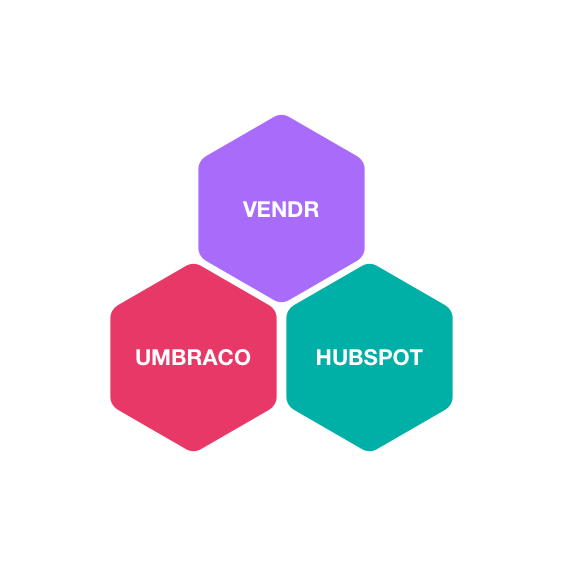
We were asked to integrate the eCommerce platform Vendr with Hubspot CRM in order to:
- Track orders as Deals in Hubspot
- Improve continuity between orders, customers and products
- Rollout abandoned cart campaigns
- Send order confirmation, follow up and feedback email campaigns
- Provide the sales team with data to rollout future campaigns
Our first step was to research how to sync data from Vendr to Hubspot. Hubspot provides an eCommerce Bridge API enabling third-party eCommerce systems to synchronise Product, Contact, Deal and Line Item information to Hubspot. However, to integrate this with Vendr and Umbraco we needed to produce a package to provide a C# wrapper to the eCommerce Bridge API. Therein lies the Hubspot Ecommerce Bridge plugin!
The plugin needed to provide a customisable mechanism for posting calls to Hubspot eCommerce Bridge, using an asynchronous queue to ensure that calls to the Hubspot eCommerce Bridge didn’t block user interaction with the site. It also needed to provide a retry mechanism in the event that messages couldn’t be sent to Hubspot (for example, if either site becomes unavailable for a period of time).
The plugin needed to:
- Handle authentication with the Hubspot eCommerce Bridge
- Provide methods to Create and Update Hubspot Stores
- Provide methods to retrieve mappings from configuration and post them to Hubspot
- Provide methods to create and update Products, Contacts, Deals, and Line Items
- Retrieve API Sync errors and write them to the Umbraco Log
Now watch the data flow!
Long story short; we designed and built the plugin, integrated it into the Umbraco solution and rolled it out to Production. As predicted, we saw order data flowing to Hubspot based on order and payment status in Vendr when payments were captured in Stripe.
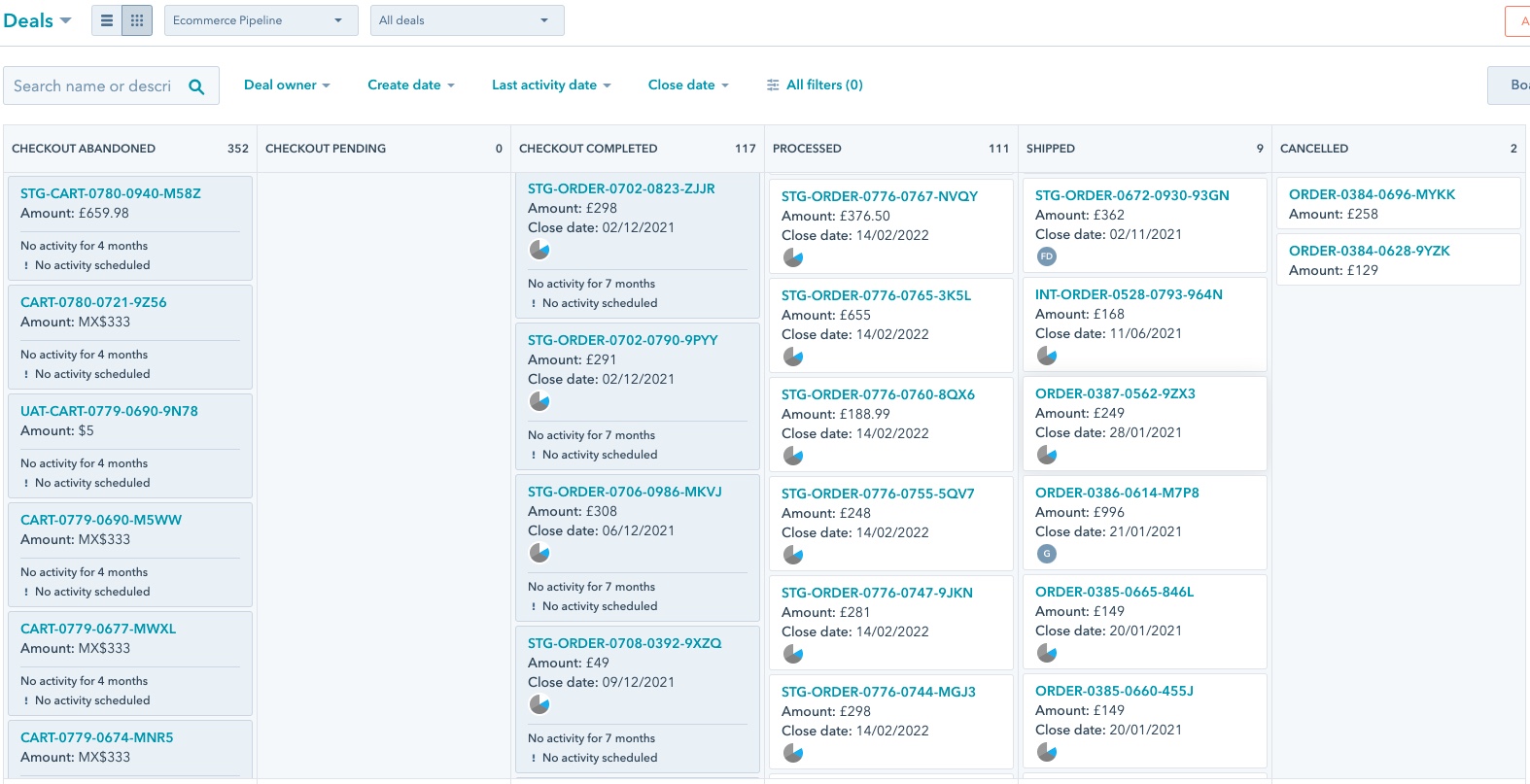
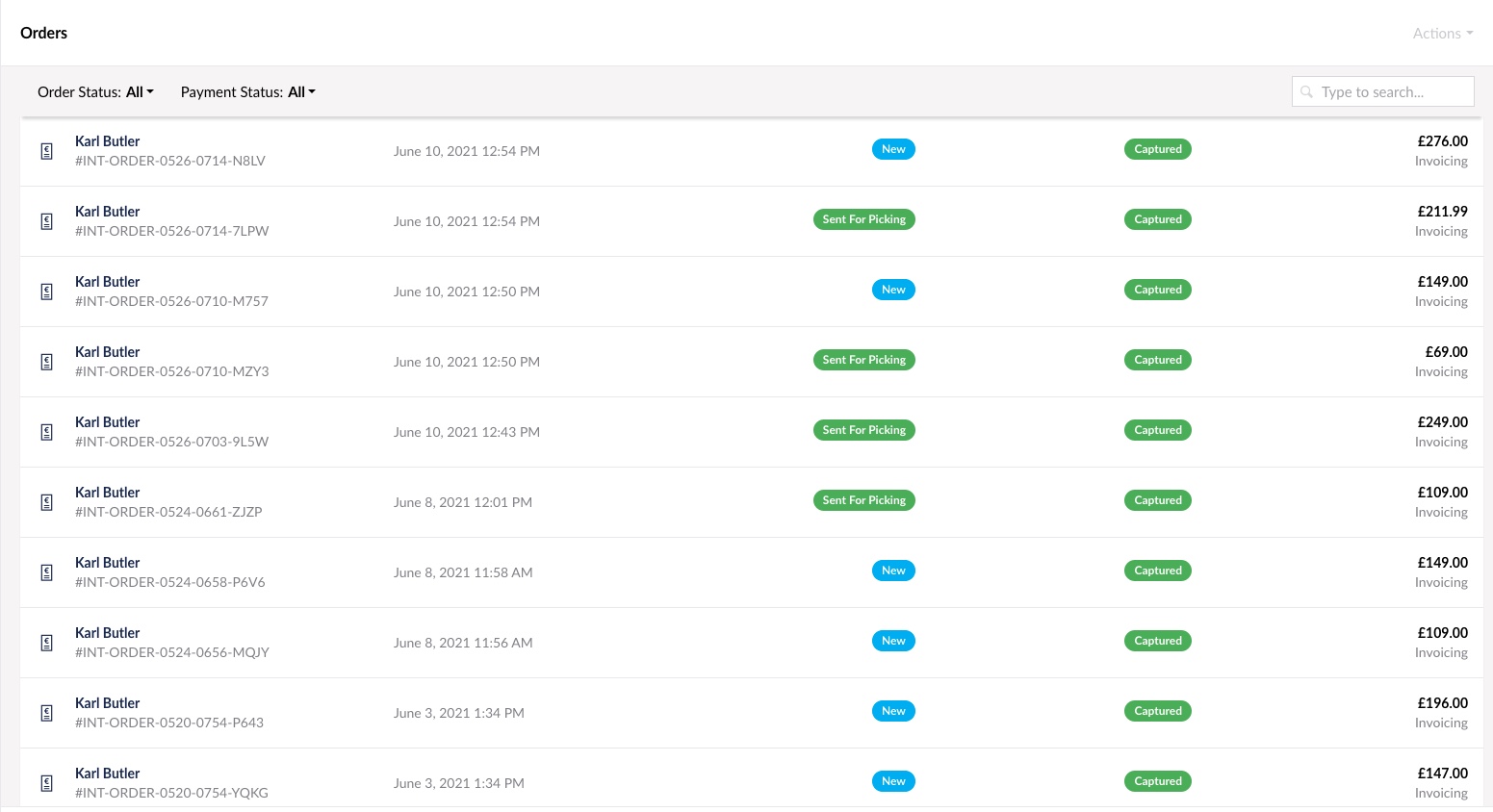
As payments were successfully captured in Stripe, the statuses were updated in Vendr, triggering an Upsert to Hubspot, and creating a new Deal in the ‘Checkout Completed’ column in Hubspot. Customers would then be sent their order confirmation via Hubspot marketing automation rules and email campaigns. Once the order was ready to be picked and packed the status would change in Vendr to ‘Ready for picking’ to ‘Sent for picking’ and in Hubspot ‘Processed’. Once the order had been picked and packed it would be moved to ‘Shipped’ in Hubspot. If the customer failed to complete checkout the order would remain in the ‘Checkout abandoned’ column and after 3 days would send a follow-up email to the customer via Hubspot marketing automation. It is worth noting that all of these statuses can be configured and mapped as necessary.
What’s next for the Hubspot Ecommerce Bridge plugin?
The next steps for us are to add some extra features, define new mappings and package it up ready to ship! Stay tuned for more updates in the near future.
Case study 2: Analytics and Data - Umbraco x Vendr x Funnel x PowerBI
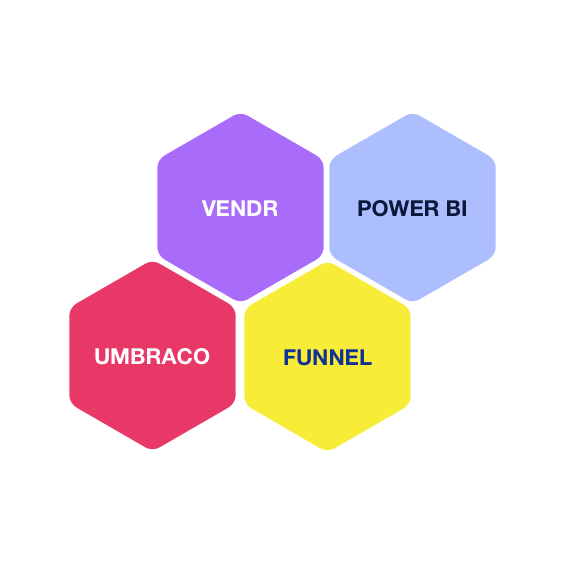
This next showcase once again features Nextbase Dashcams, but this time for Analytics and Data. Before introducing Funnel to this scenario above, we developed a series of Power BI reports and published them to the Power BI Service, pulling information directly from Vendr’s database tables, hosted on Azure SQL. However, this reporting was limited as it points to the Vendr transactional database, which is optimised for real-time commerce and ease of extension of the Vendr framework, not for OLAP reporting using a tool like Power BI. Consequently there are reports that are difficult or impossible to create in Power BI using the Vendr transactional database. There was also rich data about the Nextbase D2C platform on a number of different platforms such as
- Google Analytics
- Google Search Console
- Cloudflare
- Hubspot
- Pingdom
- Awin
- Stripe
- Klarna
and many more.
This meant that we had to produce a flexible, rich D2C BI reporting platform to unify data from across the various different data sources relevant to Nextbase, relying on Saas platforms and off-the-shelf data connectors and plugins where possible to reduce the amount of custom code written for the platform. We agreed that we would use Power BI to produce reports and dashboards and Funnel to feed eCommerce information from all of the various data sources to a data store accessible to Power BI.
So how did we overcome that? First, we analysed what Funnel can do and found that it provides functionality in the following areas:
- Extract, Transform and Load (ETL) tool functionality to extract data from source systems such as Shopify and Google Analytics, transform it into a unified data model and load it into their own data warehouse
- Data storage, to hold an unlimited amount of data in a unified data model in their own data warehouse
- Reporting and Dashboarding with their own custom platform; and
- Onward storage in external databases such as Azure SQL, Google Big Data or Snowflake
Funnel had a few integration options that we had to consider:
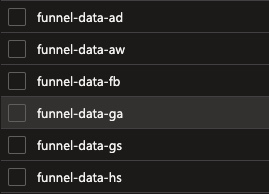
- Funnel for ETL, storage and reporting - relying on Funnel to be the all-in-one solution
- Funnel for ETL and storage, Google Data Studio (GDS) for reporting - Splitting between Funnel and GDS
- Funnel for ETL, Azure SQL for storage and Power BI for reporting - Splitting between Funnel, Azure SQL and Power BI
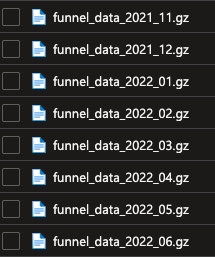 Power BI proved to be more mature than GDS, with superior features, so we chose option three (Funnel for ETL, Azure SQL for storage and Power BI for reporting). However, Funnel didn’t provide a data connector to Power BI in the way it did for GDS, so that meant an alternative approach. That approach, as recommended by Funnel, was to use an Azure Data Factory which is a hosted ETL service that can regularly load data into Azure SQL Database tables from Azure Blob Storage.
Power BI proved to be more mature than GDS, with superior features, so we chose option three (Funnel for ETL, Azure SQL for storage and Power BI for reporting). However, Funnel didn’t provide a data connector to Power BI in the way it did for GDS, so that meant an alternative approach. That approach, as recommended by Funnel, was to use an Azure Data Factory which is a hosted ETL service that can regularly load data into Azure SQL Database tables from Azure Blob Storage.
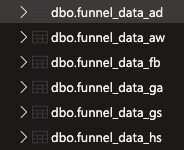 This meant that there was no need for SysAdmin intervention whenever new data (such as a new data source in Funnel) was fed to the Azure SQL database, or any custom code written to feed the data in. As a final step we set up Funnel Data Warehouse Connector to export as much data as possible to Azure Blog Storage, and configure Azure Data Factory to import the data regularly into Azure SQL.
This meant that there was no need for SysAdmin intervention whenever new data (such as a new data source in Funnel) was fed to the Azure SQL database, or any custom code written to feed the data in. As a final step we set up Funnel Data Warehouse Connector to export as much data as possible to Azure Blog Storage, and configure Azure Data Factory to import the data regularly into Azure SQL.
Next, we worked with Funnel to setup connectors to the Nextbase D2C platforms:
- Awin
- Google Analytics
- Hubspot Marketing Hub Deals (including Vendr orders not existing as a connector in Funnel)
- Google Adwords
- Search Console
- Facebook Advertising
Finally, we created a new Dataset within Power BI that connected to the new Funnel database tables within Azure SQL. We then worked with Nextbase to create comparison reports that covered each platform and displayed aggregate data. These reports were embedded onto sales monitoring dashboards, presented in board meetings and supported the sales team in focusing their marketing strategy.
We achieved the goal set out at the start which was to produce a rich D2C BI reporting platform by unifying data from across Nextbase’s D2C platforms. We did that by using best-of-breed data platforms, resulting in a powerful use of Composable DXP.
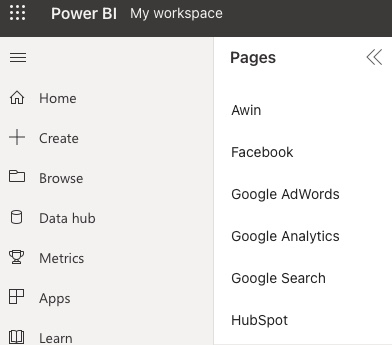
Umbraco and the Composable DXP
We asked Jesper Lyngbye, VP of Tech Partnerships at Umbraco HQ, about Umbraco’s approach to DXP and he stated:
“At Umbraco we embrace the composable DXP architecture, Our aim with Umbraco CMS—the core of our composable DXP solution—has always been to make things simpler, faster, and more intuitive.
Consequently, we provide users with a solid and user-friendly content management base that can be configured to their digital experiences across their preferred digital platforms. In contrast to the supposed blanket solution of imposed limitations of monolithic suits, users can do it just the way they want and therefore take charge of ambition and scope.”
We asked Jesper how does Umbraco stand out from the rest in the DXP space:
“Instead, Umbraco ties everything together into one highly flexible solution that works with several best-of-breed integrations and thousands of Community-created CMS extensions that customers can choose from, to create the best digital experience for their organization as well as their own customers.
At Umbraco:
- We empower you to create a customized DXP through easy integration to all of your preferred technology solutions
- Out-of-the-box integrations enables low-friction connection to all selected digital experience tools, securing faster time-to-market
- We offer the chance to build a composable infrastructure that aligns business strategies and IT priorities and ensures a future-proof solution”
Wrap up
Our experience has shown that developing a Composable DXP is reasonably easy to achieve, and, in fact, you might already be doing it. With the new focus on product at Umbraco HQ and increasing the number of integrations that build Umbraco as part of a Composable DXP, we’ll likely see more players emerging into the space and pushing out bridges and integrations for those best-of-breed marketing technologies.
To get a better understanding of the Martech landscape, core components of a Composable DXP and what we should plan for in the DXP space, watch Paul Marden’s talk at Umbraco Codegarden.
